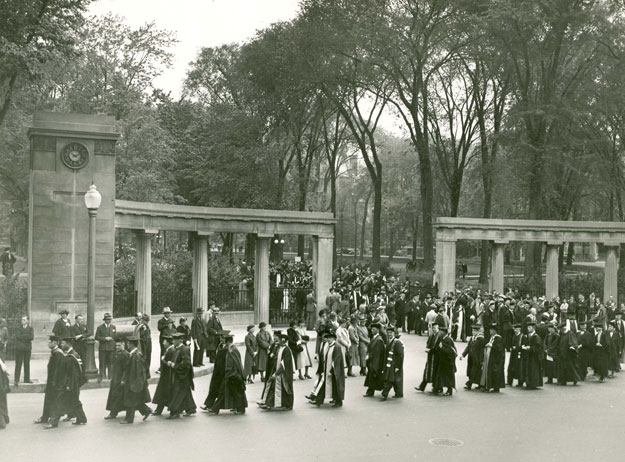I attended McGill University, which is sometimes described as “the Harvard of the North.” After reading Ross Douthat’s column on the Ivy League in today’s New York Times, it’s evident that it really isn’t—or at least wasn’t when I was there. One difference is that Canadian students didn’t “go away to college,” they simply attended whatever university was near to where they lived. Thus, most of my architecture classmates—all men—were Montrealers. Unlike Ivy League campuses today, which are awash with monogrammed sweatshirts and caps, we didn’t show off our affiliation—actually we didn’t wear sweat shirts, rather jackets and ties, and in the 1960s the annoying fashion for baseball caps had not yet taken hold. Another difference was that Canadian university tuition was not exorbitantly high. (The very wealthy had the option of sending their kids to the US.) Thus, my classmates were resolutely middle-class, mostly WASPs, a handful of Jewish Montrealers, a sprinkling of immigrant kids like myself, and a token French Canadian (they tended to go to the Université de Montréal). Did I drink? Yes, a lot, at least in the early years; late nights in the architecture studio eventually put a crimp into that activity. McGill had fraternities, and a few of my friends belonged—I was rushed but dropped out—I am not a big joiner. Few if any of my classmates attended the Canadian equivalent of American prep schools; perhaps preppies weren’t attracted to architecture? I went to a private Jesuit boys school in Montreal, but Loyola was hardly a prep school. Its chief clientele, English-speaking Montreal Catholics, tended to be of Irish or Italian heritage, the descendants of blue-collar workers (rich WASP kids went to Lower Canada College or Bishop’s), and the richest Loyola boys I recall were from the Dominican Republic and South America.


